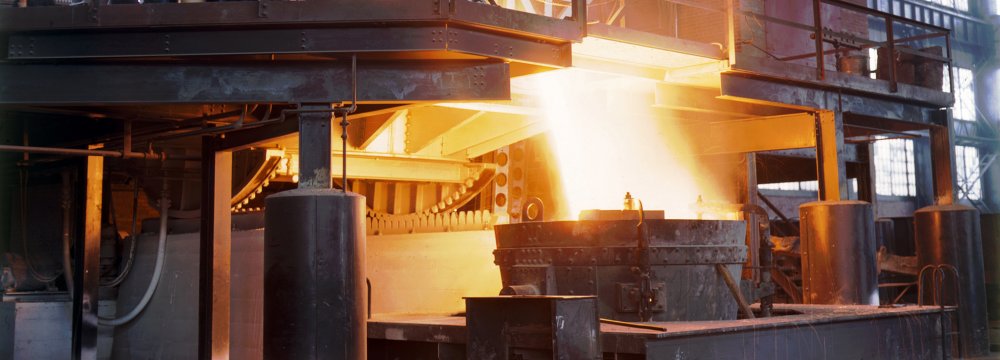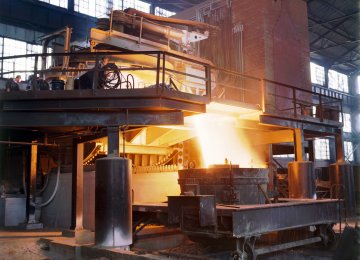Iran has laid out a path for developing its steel industry, as the country seeks to become the world’s sixth largest steel producer.
As per the objectives enshrined in the 20-Year National Vision Plan (2005-25), Iranian steel mills are to produce 55 million tons of crude steel per year.
Realizing this ambitious goal requires a considerable development of the mills’ crude steel production capacities and a steady supply of raw materials ranging from iron ore and pellets to more inconspicuous industrial materials such as graphite electrodes, SMT daily reported.
Graphite electrode is an indispensable material used in electric arc furnace steelmaking, which is the more efficient and less expensive steelmaking method compared to blast furnaces.
The electrode has excellent electrical conductivity and remarkable anti-thermal shock capability, as it carries the electricity that melts the scrap iron and steel, and sometimes direct-reduced iron. It is made from petroleum coke mixed with coal tar pitch.
Graphite electrodes are gaining in importance as an increasing proportion of global steel is made using EAFs.
According to industry experts, Iran currently requires 40,000 to 50,000 tons of graphite electrodes per year. Considering the goals stated in the Vision Plan, this figure jumps to over 100,000 electrodes per year. This is while nearly all the mills’ demand for this industrial material is met through imports.
“Iran’s graphite electrode market is currently monopolized by Russia, India and China,” according to Nasiruddin Zoei, Danieli Group’s sales manager.
Located in Yazd Province’s Ardakan City, Iran’s only graphite electrode production plant oscillated between different managers and patrons for over 20 years and is currently non-operational.
“According to estimates, the price of imported graphite electrode is nearly three times more than what a domestic producer can offer, [considering energy and raw material procurement costs],” says the steel market expert.
“Considering the heavy dependence of the steel industry on graphite electrode, if it is not domestically produced, goals set in the Vision Plan will not materialize.”
The government realized the importance of setting up a graphite electrode plant back in the 90s, during which a consortium, including Petrochemical Industries Investment Group, Mines and Metals Development Investment Company, National Iranian Steel Company and Bank of Industry and Mine, was formed and the project kicked off with NISCO’s management.
The actual implementation of the plant, however, was delayed over the following decade as the project patronage shifted from NISCO to Iranian Mines and Mining Industries Development and Renovation Organization and the imposition of sanctions on Iran over the country’s nuclear program drove away potential French, Italian and Belgian investors.
Last year’s fruitful July 14 nuclear accord reached between Iran and world powers and the subsequent lifting of economic sanctions against the country brought hope to the industrialists that incomplete industrial projects desperately in need of investment and modern technologies can be revived, including the Ardakan Graphite Electrode Complex.
According to the project manager, Abolqasem Mokhtari, a €1.2 million consignment of graphite electrode production equipment imported from Europe was delivered in early 2015, raising hope that the plant can become operational by the end of next year.
Mokhtari emphasized that the rest of the required machinery are set to be delivered by the end of 2016, adding that the delay in the project is due to complications related to funding.
The Ardakan plant is meant to produce 45,000 tons of graphite electrodes per year. Experts believe if the plant operates at full capacity, it can meet the steel industry’s demands, but it cannot keep up with the government’s industry development plans without capacity expansion.





